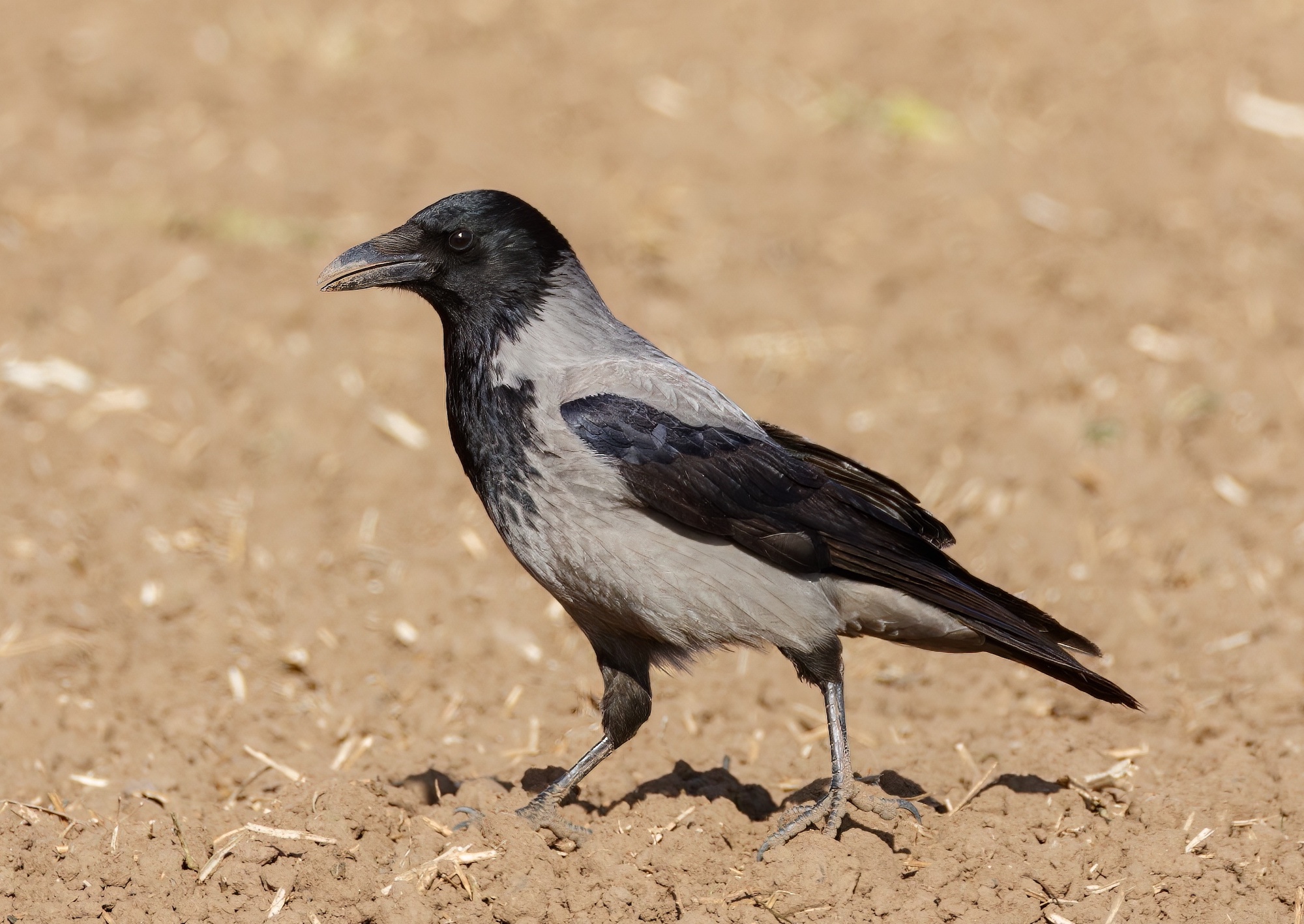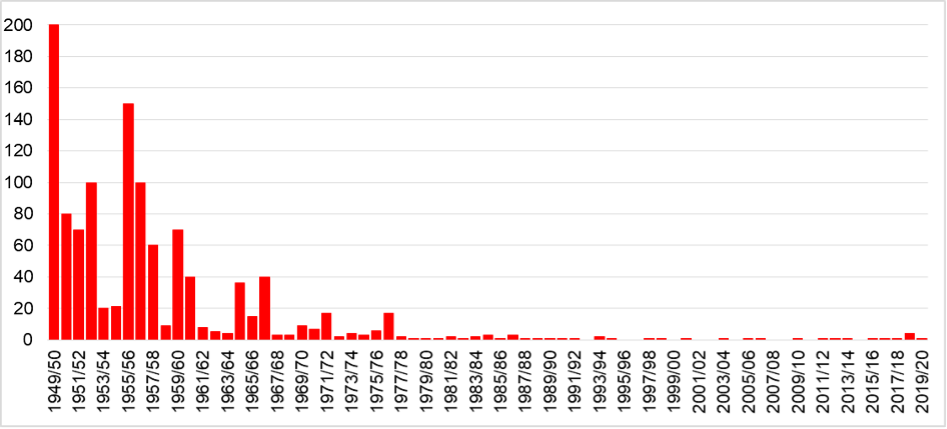Hooded Crow Corvus cornix

The status of Hooded Crow in Lincolnshire was given detailed treatment by Henderson in LBR 2018. In summary, it was an abundant passage migrant and winter visitor up until the 1930s; no counts are reported but are assumed to have been in the hundreds or even thousands; terms such as 'extremely abundant' and 'exceedingly common' were used to describe their status. The largest numbers were found in coastal areas but smaller concentrations were found inland, especially in open farmland. By the 1950s, a decline was well under way and but annual peak counts were still in the low hundreds; the decline continued until the mid-1990s. Over the last 20 years to 2020 annual numbers have fluctuated between none in 2008-2009 to 19 in 2018-2019 with an average of 3-4 per year. Birds generally arrive in October-January with a small return spring migration in April. Peak site totals vary between three and five birds. The chart below graphically illustrates the decline at Gibraltar Point NNR since winter 1949/50. Coastal sites between Donna Nook and Gibbraltar Point are still the most reliable places to find Hooded Crows in the winter months.

Annual Hooded Crow maxima at Gibraltar Point, 1949/50-2019/20 (image courtesy of Andrew Henderson).
The seasonal pattern of occurrence has changed little from early times. Despite the small numbers now occurring, it is still possible to detect higher numbers during the passage periods of October-November and March-April. Summer records are rare. Also as before, the majority of Hooded Crows are found along the coasts or estuaries, with far smaller numbers inland. In Britain and Ireland, crows of both species are highly sedentary, and the Hooded Crows occurring along the east coast of England in winter are believed to come from the more migratory populations of Scandinavia. The decline in numbers here may be due to birds remaining in continental Europe rather than crossing the North Sea to Britain. There are three historic ringing recoveries from Sweden (2) and Norway (1) between October-January in 1938, 1947 and 1951.
Reference
Henderson, A.P. (2018). The Hooded Crow in Lincolnshire and Kent. Lincolnshire Bird Report 2018: 189-195.
(Account as per new Birds of Lincolnshire (2021), included October 2022)

